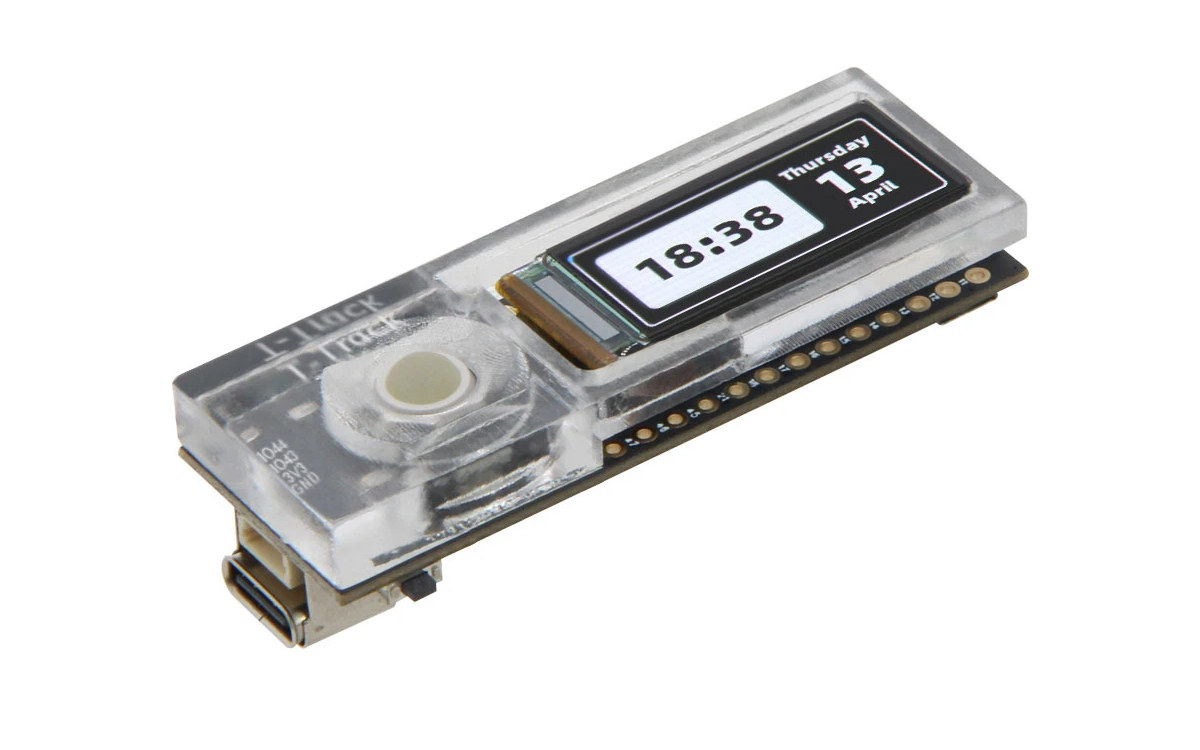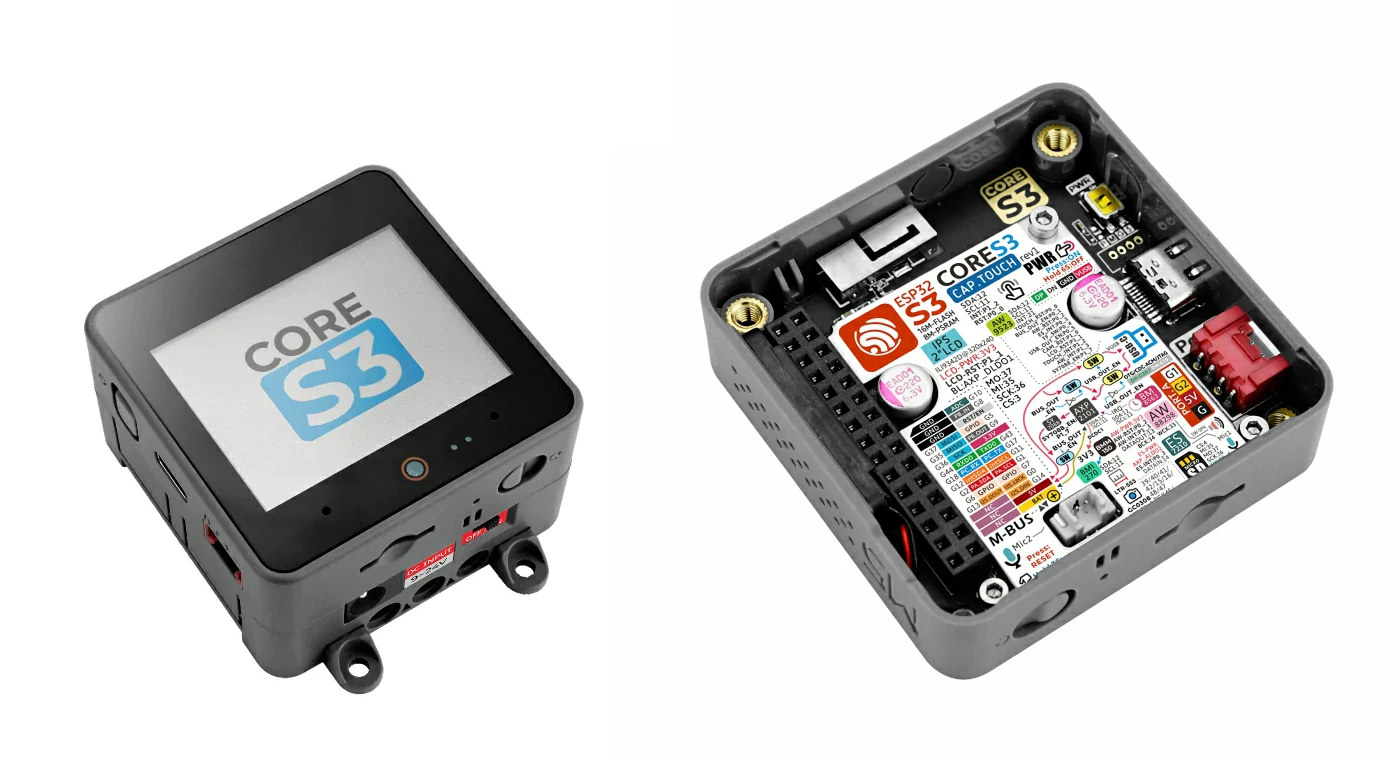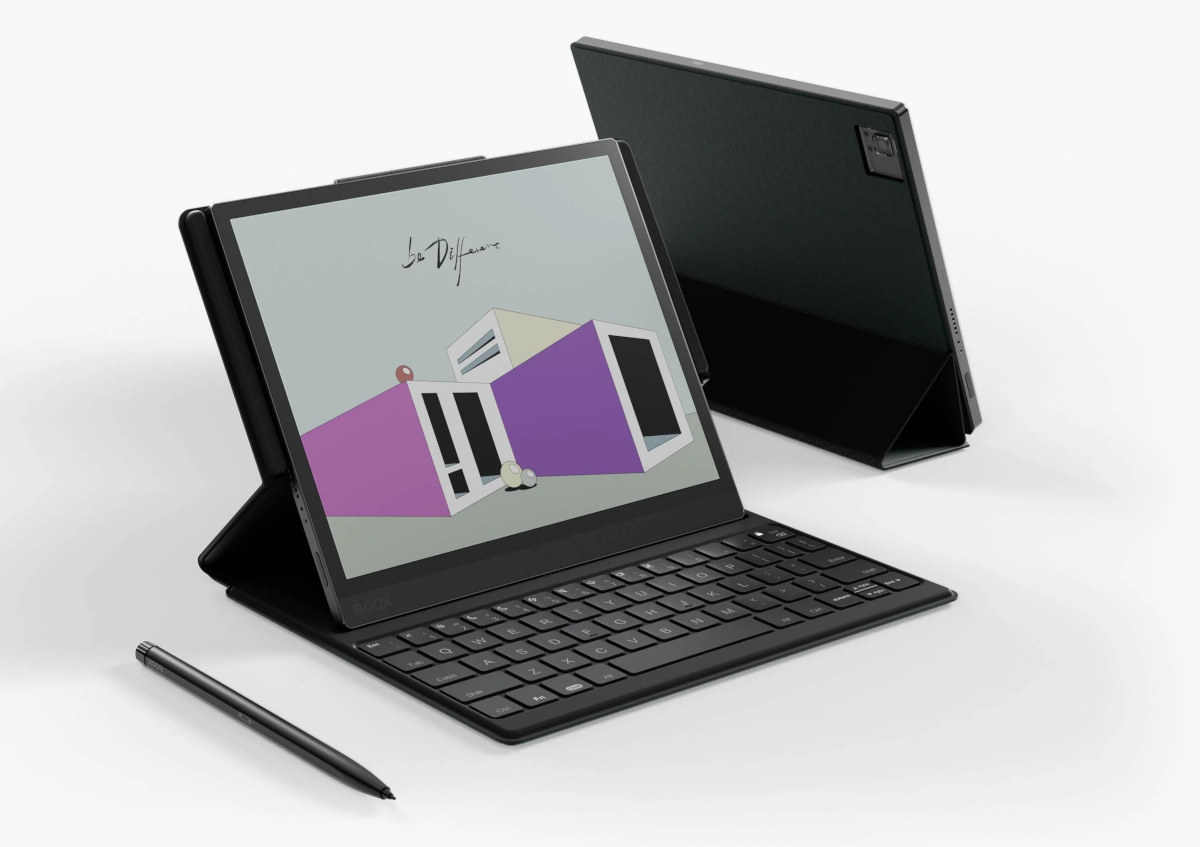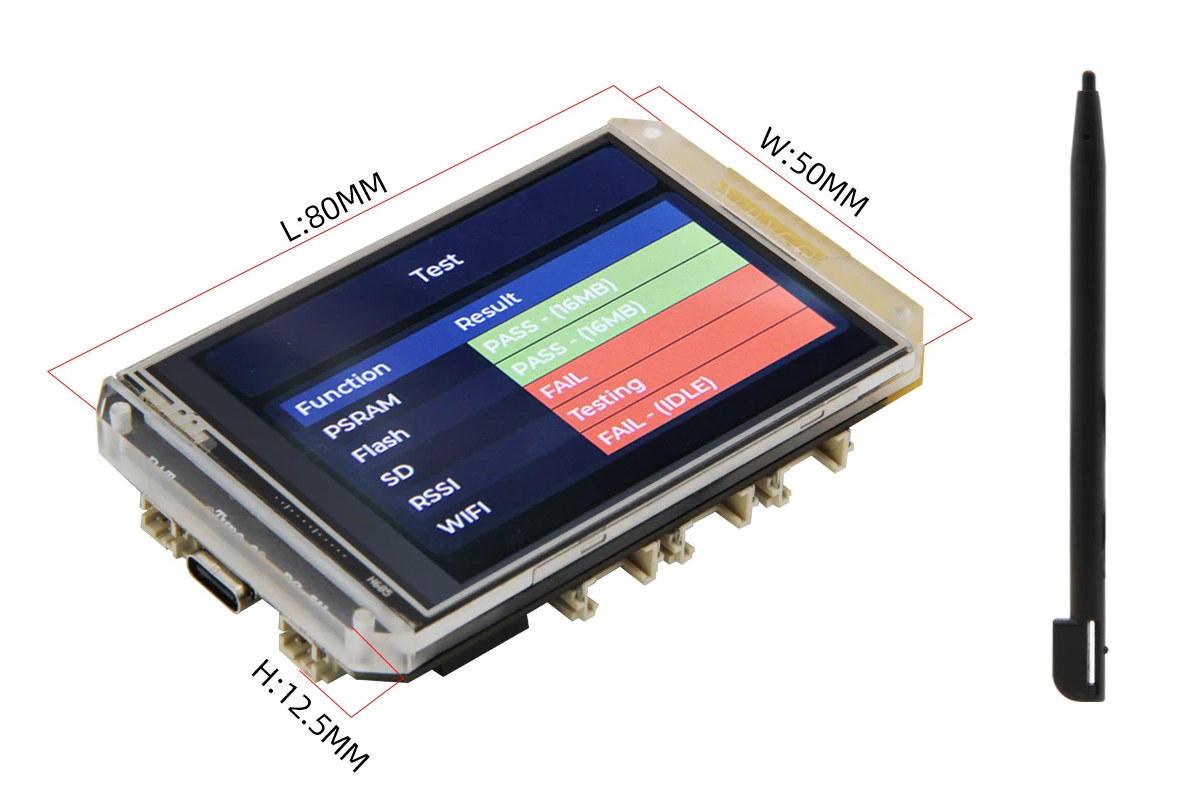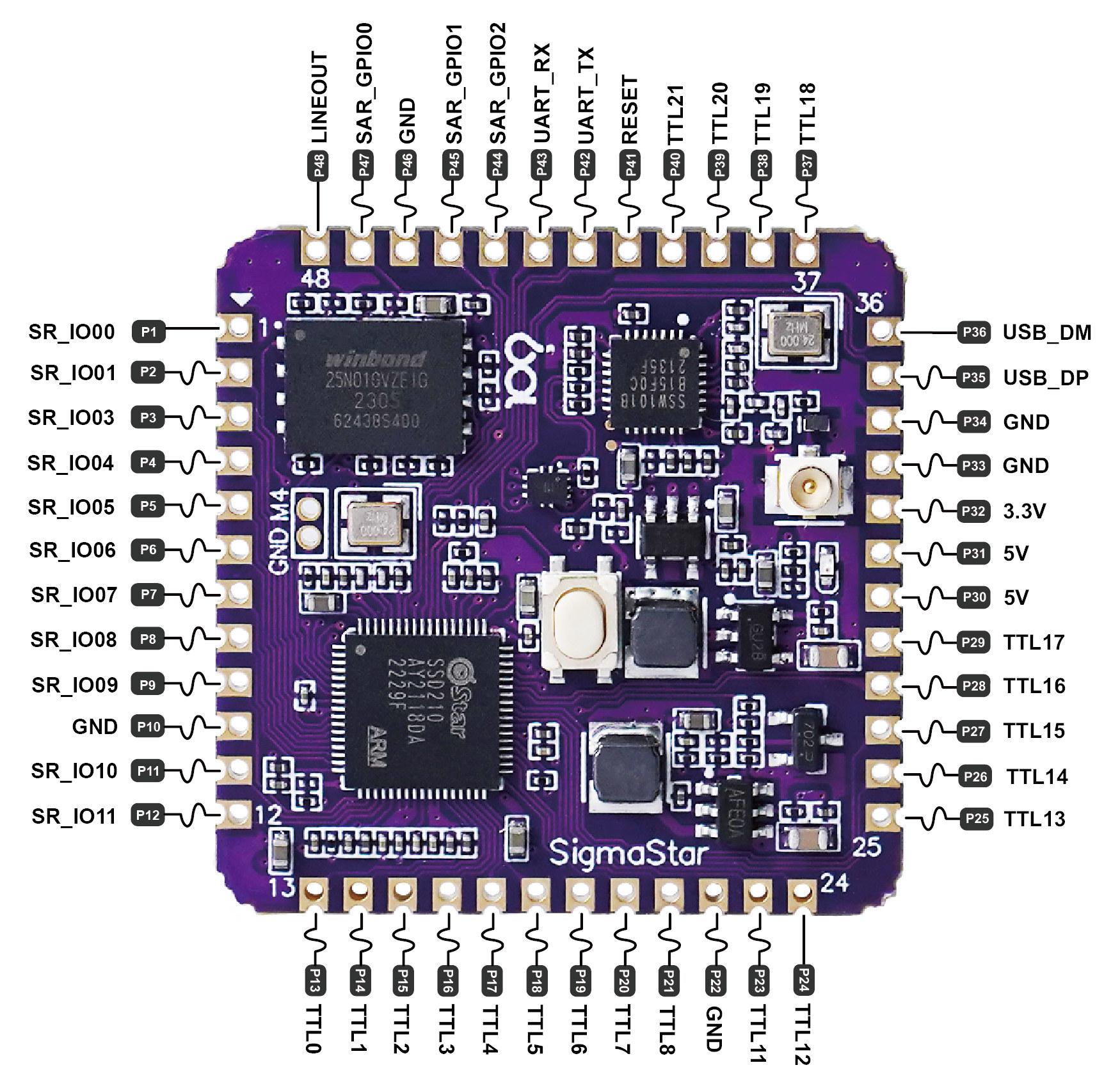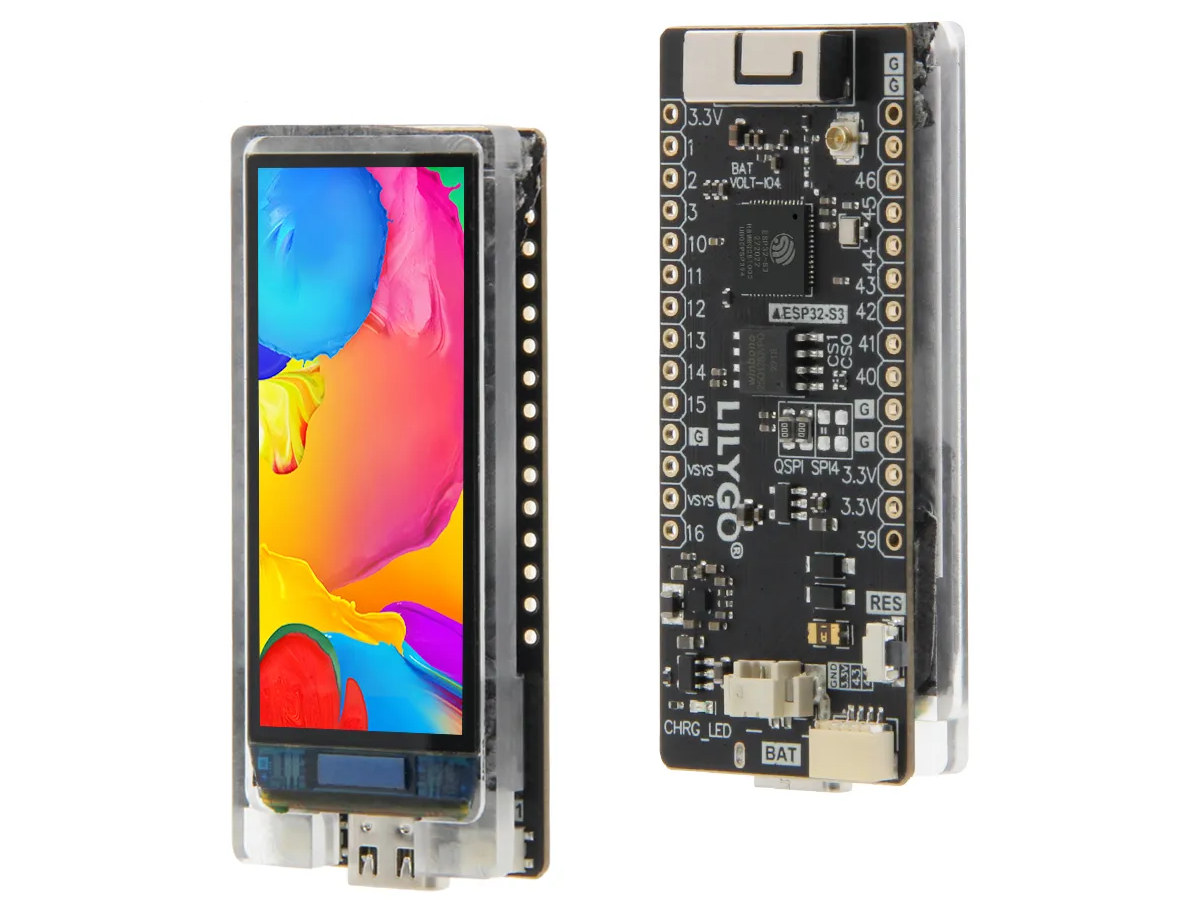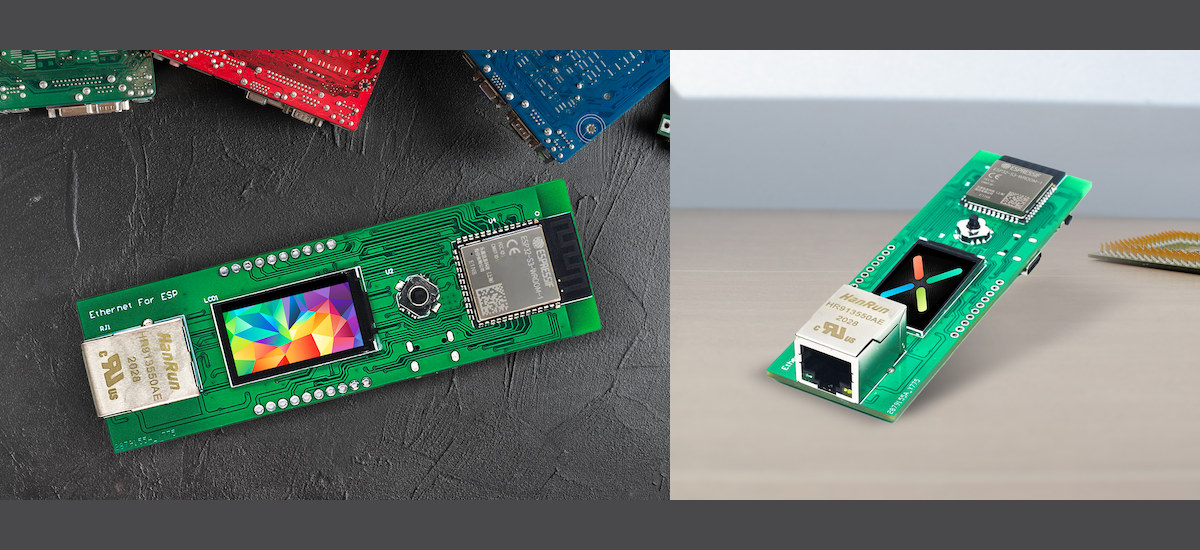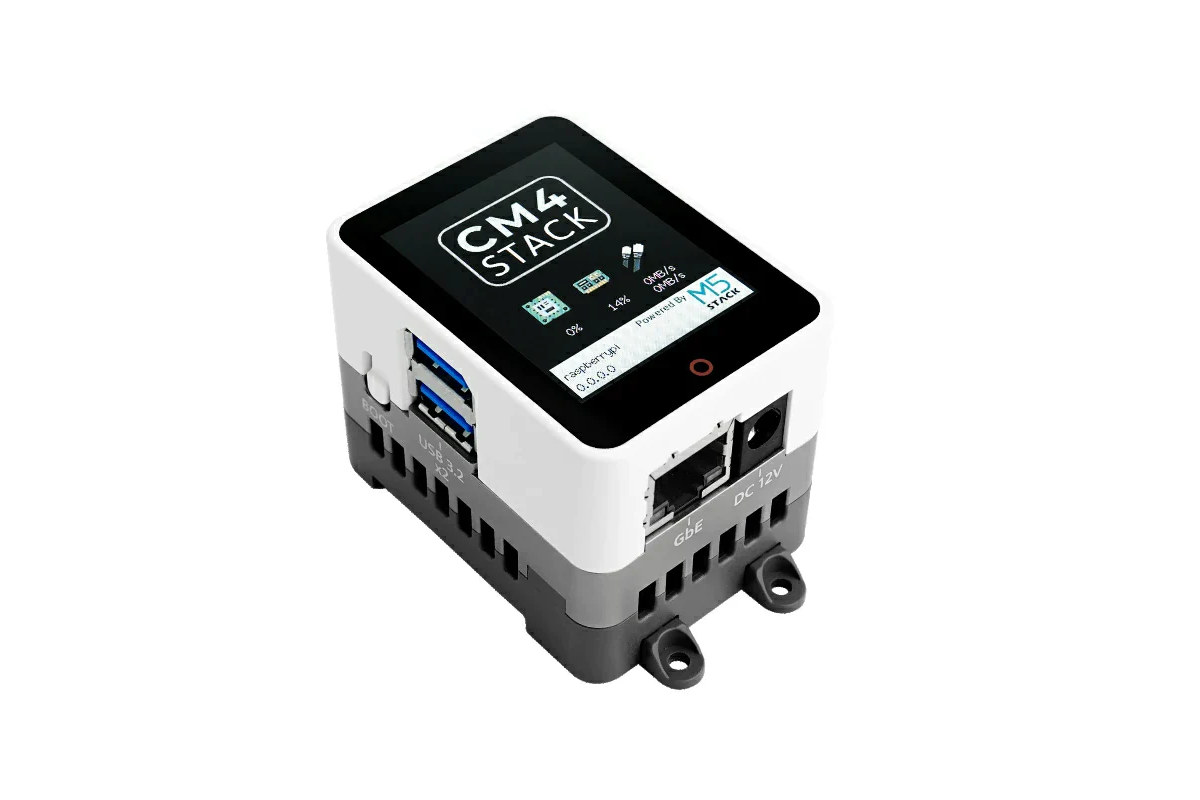After the T-Display-S3 AMOLED board, LILYGO has launched another ESP32-S3 board with an AMOLED display named the T-Track that features a smaller 1.1-inch AMOLED display and a trackball that allows the user to navigate any menu or user interface shown on the display. The rest of the board’s specifications are very similar with an ESP32-S3R8 dual-core chip with 8MB PSRAM providing WiFi and BLE connectivity, a 16MB SPI flash for storage, two rows of pins for up to 18x GPIOs, a Qwicc connector for module expansion, and support for USB-C charging and a LiPo battery for power. T-Track specifications: Wireless MCU – Espressif Systems ESP32-S3R8 dual-core Tensilica LX7 @ up to 240 MHz with vector instructions for AI acceleration, 512KB RAM, 8MB PSRAM, wireless connectivity Storage – 16MB flash Connectivity via ESP32-S3 2.4 GHz 802.11 b/g/n Wi-Fi 4 with 40 MHz bandwidth support Bluetooth Low Energy (BLE) 5.0 connectivity with […]
$60 M5Stack CoreS3 ESP32-S3 IoT controller comes with 2-inch display, VGA camera, multiple sensors
M5Stack CoreS3 is a battery-powered ESP32-S3 IoT controller with WiFi and Bluetooth connectivity, a 2-inch touchscreen display, a 0.3MP camera, a microSD card slot for storage, several sensors, plenty of I/Os, a USB Type-C OTG port, as well as a 9V to 24V DC input port. That’s the second ESP32-S3 IoT controller from M5Stack we’ve seen this year, as the CoreS3 follows the smaller M5Stack AtomS3 with a 0.85-inch display, only a few I/Os, and fewer features overall although it does come with an IR transmitter that’s missing from the larger CoreS3. M5Stack CoreS3 specifications: Wireless MCU – Espressif Systems ESP32-S3FN16R8 dual-core 32-bit Xtensa LX7 microcontroller with AI vector instructions up to 240MHz, RISC-V ULP co-processor, 512KB SRAM, 2.4GHz WiFi 4 (802.11b/g/n), Bluetooth 5.0 BLE + Mesh, 16MB flash, 8MB PSRAM Antenna – Internal “3D” antenna Storage – MicroSD card slot Display – 2-inch display with 320×240 resolution via ILI9342C […]
Onyx BOOX Tab Ultra C 10.3-inch color E-Ink Android tablet comes with stylus support
Onyx BOOX Tab Ultra C is an Android 11 tablet with a 10.3-inch E-Ink Kaleido 3 color display with 2480 x 1860 black & white resolution, 1240 x 930 color resolution, a capacitive touchscreen and support for a stylus with 4096 levels of pressure. The tablet is an evolution of the BOOX Tab Ultra black-and-white tablet with a 4096-color E-Ink display using the latest Kaleido 3 screen that increases color saturation by 30 percent and reduces blue light reflections compared to earlier Kaleido Plus displays. BOOX Tab Ultra C specifications: SoC – Unnamed “Qualcomm Advanced” octa-core processor (likely the 2.0 GHz Snapdragon 662 octa-core Cortex-A73/A53 processor like in its black-and-white predecessor) System Memory – 4GB LPDDR4X Storage – 128GB UFS 2.1 flash, microSD card slot Display 10.3-inch Kaleido 3 (4,096 colors) Carta 1200 glass screen with flat cover-lens Resolution: B/W: 2480 x 1860 (300 ppi); color: 1240 x 930 (150 […]
T-HMI ESP32-S3 board comes with an 2.8-inch touchscreen color display, three Grove expansion connectors
Lilygo has launched yet another ESP32-S3 board with an integrated display, but the T-HMI has a larger 2.8-inch color display and a resistive touch panel suitable for HMI (Human Machine Interfaces). It is also equipped with three Grove connectors for expansion with sensors or actuators. Like all the recent ESP32-S3 boards from Lilygo, the T-HMI features the ESP32-S3R8 WiFi 4 and Bluetooth MCU with 8MB PSRAM, as well as a 16MB SPI flash, a microSD card slot, a few buttons, and power from USB or a LiPo battery. Lilygo T-HMI board specifications: Wireless MCU – Espressif Systems ESP32-S3R8 dual-core Tensilica LX7 @ up to 240 MHz with vector instructions for AI acceleration, 512KB RAM, 8MB PSRAM, wireless connectivity Storage – 16MB SPI flash, microSD card socket Connectivity via ESP32-S3 2.4 GHz 802.11 b/g/n Wi-Fi 4 with 40 MHz bandwidth support Bluetooth Low Energy (BLE) 5.0 connectivity with long-range support, up […]
$7 DongshanPI-PicoW is a small Arm Linux board with SSW101B USB WiFi chip, four 12-pin headers
Based on its name, the DongshanPI-PicoW board/module aims to be an Arm Linux alternative to the Raspberry Pi Pico W with a SigmaStar SSD210 dual-core Cortex-A7 processor with 64MB RAM, an SSW101B USB WiFi 4 chip, plus a good amount of I/Os thanks to four 12-pin headers. The module also comes with a 128MB SPI flash to run Linux, takes 5V power input, and offers a display interface up to 1280×800, USB 2.0, audio interfaces, and more in a small 31×31 mm form factor with 48 through and castellated holes that should be easy to integrate into compact devices. DongshanPI-PicoW specifications: SoC – SigmaStar SSD210 dual-core Arm Cortex-A7 at up to 1.0GHz with FPU, NEON, MMU, DMA, 2D graphics accelerator, 64MB on-chip DDR2 RAM Storage – 128MB SPI NAND flash (Winbond W25N010) Connectivity – Sigmastart SSW101B 802.11b/g/n 2.4GHz 1T1R WiFi 4 module + u.FL antenna connector USB switch – Onsemi […]
T-Display-S3 AMOLED – An ESP32-S3 board with a 1.9-inch AMOLED Display
There are plenty of ESP32 series boards with display usually TFT or E-Ink, but I don’t think I’ve ever seen one with an AMOLED display and that’s what Lilygo is offering with the “T-Display-S3 AMOLED” board equipped with an ESP32-S3 WiFi and Bluetooth microcontroller and a 1.9-inch AMOLED display. The new board is almost the same as the T-Display-S3 board introduced last year, except for a display with higher resolution, more vibrant colors, and a wider viewing angle, plus a 3D antenna, and a few extra I/Os. T-Display-S3 AMOLED specifications: Wireless MCU – Espressif Systems ESP32-S3R8 dual-core Tensilica LX7 @ up to 240 MHz with vector instructions for AI acceleration, 512KB RAM, 8MB PSRAM, wireless connectivity Storage – 16MB flash Connectivity via ESP32-S3 2.4 GHz 802.11 b/g/n Wi-Fi 4 with 40 MHz bandwidth support Bluetooth Low Energy (BLE) 5.0 connectivity with long-range support, up to 2Mbps data rate. 3D antenna […]
ESPi Ethernet & info display board comes with ESP32-S3 module or Raspberry Pi Pico W board (Crowdfunding)
SB Components’ ESPi is a WiFi-enabled Ethernet board with a 1.14-inch information color display either coming with an ESP32-S3 WiFi and Bluetooth module or designed as a carrier board for the Raspberry Pi Pico W board. I have no idea who needs this, but the ESPi board looks cute and can be used as a 10/100Mbps Ethernet to WiFi (or BLE) gateway with a small TFT display, and there’s also a small joystick on the board to control a potential menu or user interface rendered in the display. ESPi board specifications: Module/Board (one or the other) ESP32-S3-WROOM-1 module with ESP32-S3 dual-core LX7 microprocessor @ up to 240 MHz with Vector extension for machine learning, up to 16MB flash, up to 8MB PSRAM, WiFi 4, and Bluetooth 5 with LE/Mesh Raspberry Pi Pico W board with Raspberry Pi RP2040 dual-core Cortex-M0+ microcontroller @ 133 Mhz with 264KB RAM, 8MB SPI flash, […]
M5Stack CM4Stack – A tiny Raspberry Pi CM4 Linux computer with an integrated 2-inch display
M5Stack CM4Stack is a tiny Arm Linux mini PC based on Raspberry Pi CM4 that measures 59 x 44 x 46mm and integrates a 2-inch touchscreen display for information and control, as well as the usual ports you’d expect from a mini PC such as HDMI, USB 3.2 ports, Gigabit Ethernet, and so on. We’ve previously written about M5Stack Core and Atom controllers based on ESP32 microcontrollers, an optional 2.0-inch display, and a few GPIOs. The company has now decided to provide a similar solution with a jump in performance and interfaces with the CM4Stack development kit. CM4Stack specifications: SoM – Raspberry Pi CM4 (CM4104032) with SoC – Broadcom BCM2711 quad-core Cortex-A72 processor @ 1.5 GHz System Memory – 4GB RAM Storage – 32GB eMMC flash Wireless module with 802.11 b/g/n/ac WiFi 5 and Bluetooth 5.0 Integrated display – 2.0-inch LCD with ST7789V2 controller, touchscreen function Video Output – HDMI […]


